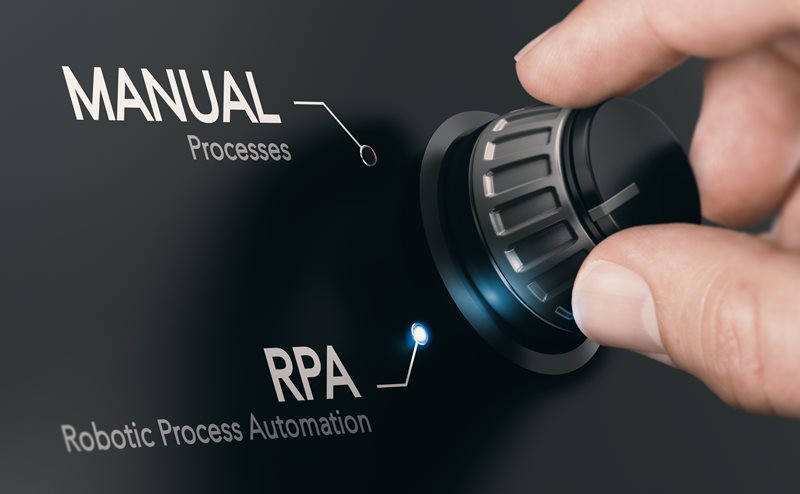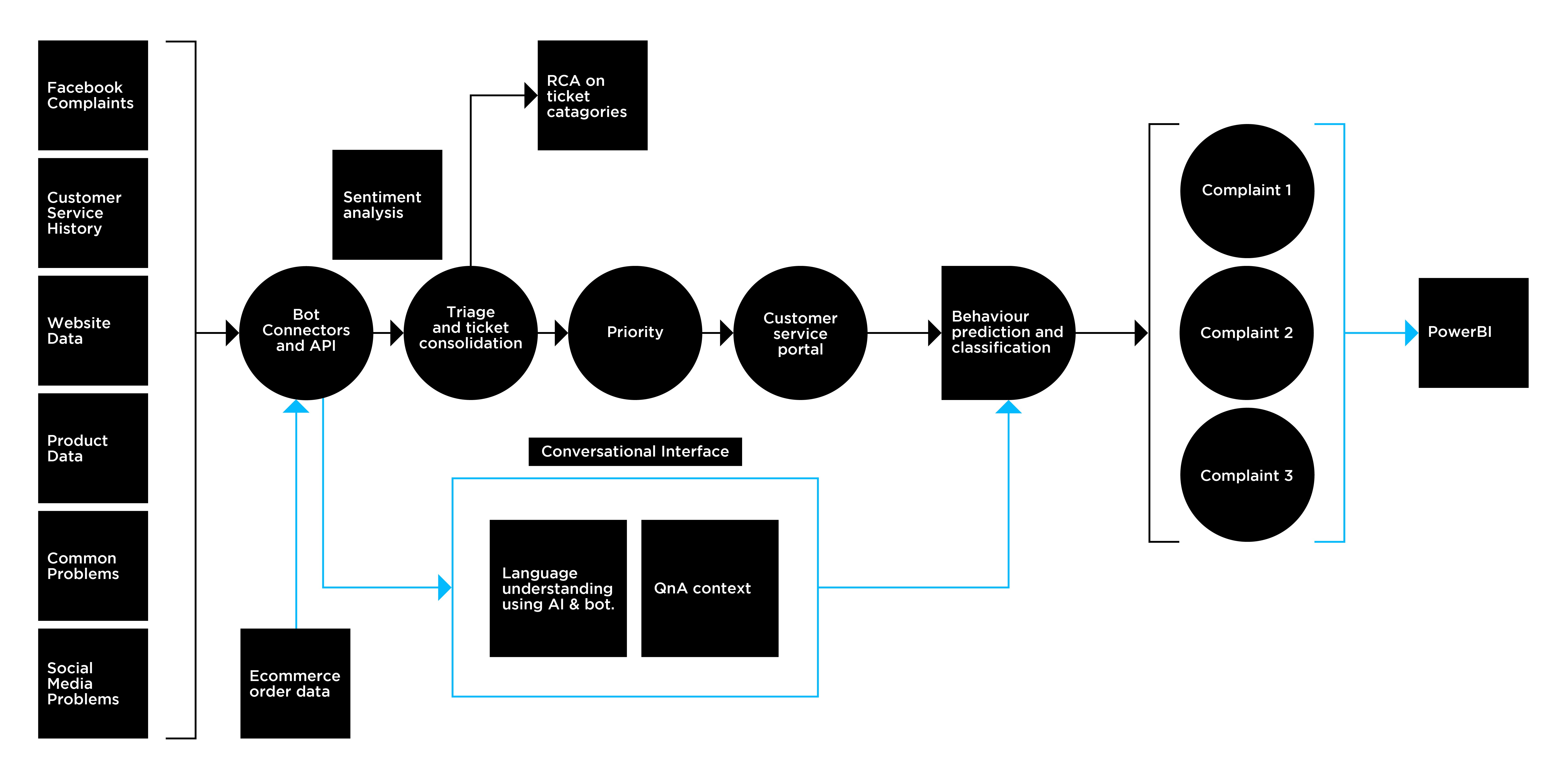
Let’s talk about Robotic Process Automation. Now, RPA is nothing new, but recent services from the likes of Microsoft enable organisations to build Intelligent Automation solutions without the significant investment previously required, particularly if they’re already invested in Microsoft solutions such as Office 365, Power Platform or Dynamics. Used in conjunction with AI-driven chatbot frameworks, direct to consumer brand can increase the ease, speed and efficiency of customer enquiry management, ultimately improving brand experience.
Here we look at the challenges DTC brands face, with the dramatic increase and acceleration in digital customer interactions meaning increased customer support. We also look at an example of a solution Pull recently worked on, and the huge benefits an effective automation strategy can have.
Creative use of technology to improve DTC customer engagement
For many health and beauty retailers selling directly online, dealing with customer enquiries across multiple channels in a fast paced 24/7 retail environment can be a real challenge.
Recent research from Contentsquare analytics showed UK online beauty retailers experienced a 38% increase in visits during periods of lock down, which resulted in a 51% uplift in the amount of time being spent on their sites. But most importantly looking forward, 47% of consumers said they would continue to purchase using the same habits they have developed during lock down and only 16% said they would go back to their old habits (the rest weren’t sure).
Where once enquires came either directly through the site via email or to a call centre, social media and a multitude of enquiry channels can make effective and fast customer response a real headache. Brands now need to respond more rapidly, with improved customer experience to grow market share, but without any, or significant cost increases.
In looking at this challenge, we will showcase a real example Pull worked on with one such brand.
The Challenges
In dealing with DTC beauty brands we have found many organisations are battling with the same customer support challenges, exacerbated by increasing volume and scope:
Multiple Channels:
Does your organisation offer multiple channels allowing customers to submit enquiries via their choice of channel? How do you ensure you efficiently capture enquiries across all of those channels?
Service Quality:
How do you ensure all enquiries receive consistent and timely responses?
Process Automation:
What efficiencies can be delivered if you adopt Robotic Process Automation (RPA) and Artificial Intelligence (AI) to capture, prioritise and respond to queries?
Single View of the Customer:
Does your organisation have a single view of the customer? Do you use data to understand customers better, delivering cost savings and relevant, consistent, high quality responses?
Reporting:
Can your teams deliver the reporting they and the business require consistently without large amounts of manual processing?
Business Insight:
Is your organisation identifying common themes and being proactive in reducing enquiry volume by improving public access to information?
Customer problem
We worked with one DTC beauty brand who were manually dealing with thousands of complaints, product questions and sales per week, across multiple channels and sources. The enquiry management was being done manually by several people across operational and marketing teams, and being managed in various systems. We helped migrate from an ever increasing and complex manual set of processes to an RPA solution that increased staff productivity, improved response times, retained customers and built brand loyalty.
We chose to focus on managing customer service and complaints as:
- The brand was managing multiple channels of communication,
- Multiple operators were working across multiple channels, often creating duplicate tickets where customers were using multiple channels,
- Resolution rates were unknown – just open or closed,
- Other team members were being pulled onto addressing complaints because capacity was being exceeded,
- Enquiries were being manually recorded in spreadsheets
- There was no way to identify service metrics or repeat queries.
What we did
We created a solution that integrated and automated all enquiry channels and order data through triage and RPA, feeding into a customer service portal.
During the process we conducted an analysis of aggregated complaints and enquiries across all data sources. The adage of ‘rubbish in, rubbish out’ and ‘don’t automate what you don’t need to’ rang true.
The root cause analysis (RCA), of enquiries and complaints showed common problems and duplicate tickets that were inflating the service challenges for the team. This was an important step as it enabled us to help improve the user experience for customers visiting the website. By making this information available on the website, it could help reduce the number of requests to the team. It could also improve the information available to help resolve live enquiries by directing customers to the information or providing the answers directly in a chat window.
Intelligent conversational support also played a part in the solution, so we worked with the brand to outline the design of a chatbot; where it needed to connect, what it needed to do and identified other features that would be useful to include. A simplified solution diagram can be found below:

With this powerful solution now operating, the team could work on adding additional features, and even integrate with their Shopify platform and order management system so customers could receive live information on their order.
The next steps with the brand, and part of the project we’re working on at the moment, is training the models on customer behavior in an effort to further predict the enquiries and enable the brand to become a proactive force to turn service into sales.
Brand benefits
The solution provided the following benefits:
- Enhanced customer experience by supporting enquiries across multiple channels.
- A single tool and interface for staff dealing with all types of enquires including product application, complaints, and general enquiries. Questions provide a single view and reduced training time.
- Robotic Process Automation eased the administrative burden by automating a range of enquiry management functions including classifying, allocating and prioritising customer enquiries.
- Improved productivity, response times and quality with a range of tools, automation, templates and knowledge base.
- Supported a proactive approach to enquiry management by early identification of common queries, enabling the publishing of public FAQs.
- Provided a flexible and modern, customisable and scalable solution to suit customer requirements and budget.
It is fair to say, implementing emerging technologies including RPA, chatbots and AI are no longer just for global multibillion-dollar businesses.
The expertise and tooling are now available to produce quick wins, with a ‘Think big, start small’ mindset, implementation need not be a logistical or financial risk, and benefits can be attained and analysed in a relatively short timescale.
For many DTC brands the ROI calculations can be significant in relatively short timeframes. If done strategically, ultimately the benefit to your customers and the brand will outweigh any investment and give your brand a best in class experience.
Posted 16 November 2020 by Dean Corney